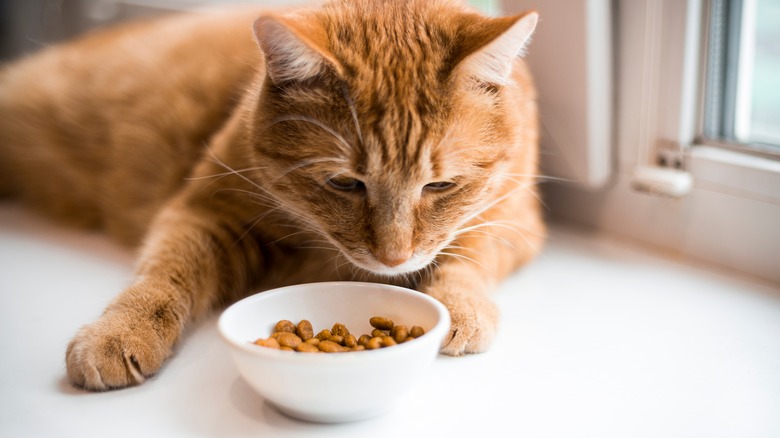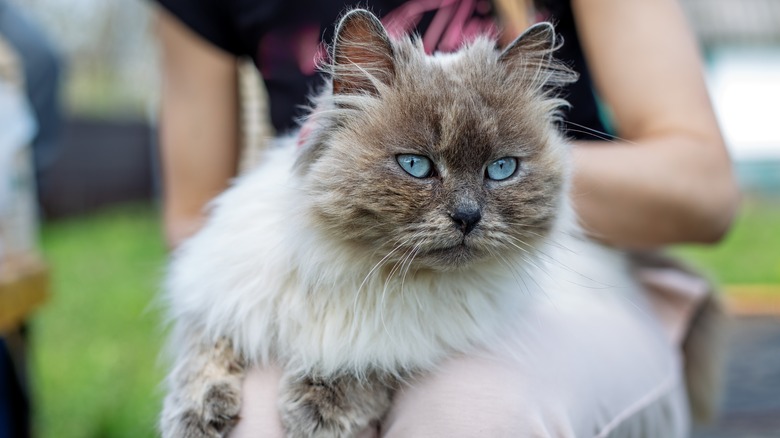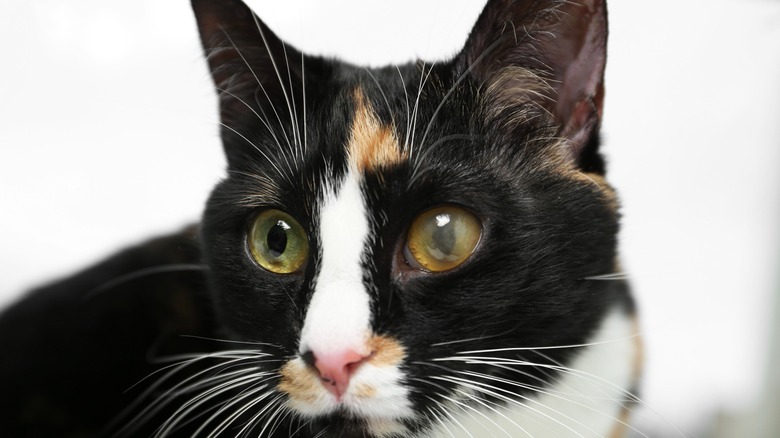The Unsettling Effect A High-Fat Diet Can Have On Your Cat's Eyes
While many pet owners may be aware that too much fat in their kitty's diet can cause issues like obesity, they may not know that it can also affect their eyes. When cats have too much fat in their systems, they can develop a condition called hyperlipidemia, usually when their cholesterol and/or triglycerides are inflated. This surplus of fat may affect a cat's vision by settling into their cornea and giving them a white spot on or in their eye. Hyperlipidemia can also lead to other vision problems, even some as severe as blindness.
While your cat might experience a temporary rise in fat after eating a meal, the concern of hyperlipidemia comes into play when their fat levels are constantly high and don't go back to normal after chowing down. There are two types of hyperlipidemia kitties can experience: secondary and primary.
Secondary versus primary hyperlipidemia in cats
Secondary hyperlipidemia occurs due to some sort of outside factor and is the more frequently seen version of the condition. Along with a high-fat diet, secondary hyperlipidemia can result from other factors, such as certain medications, liver disease, kidney disease, and pancreatitis. According to a 2022 study published in the Journal of Feline Medicine and Surgery, "DM and obesity are the most common endocrine causes of secondary hyperlipidemia," with DM referring to diabetes. Again, high-fat diets can lead to too much weight gain, which can then trigger the development of diabetes and spiral further into hyperlipidemia.
Cats can also experience primary hyperlipidemia. Like the name suggests, instead of getting the condition from a secondary source, primary hyperlipidemia is hereditary. It is much rarer than secondary, but breeds like Himalayan cats may be more at risk for this condition. Both forms of hyperlipidemia may produce serious symptoms, including eye problems like lipemia retinalis, lipid aqueous, and lipid keratopathy, per the 2022 study.
Symptoms of hyperlipidemia and prevention strategies
Sometimes cats show symptoms of hyperlipidemia, but this isn't always the case, especially in the beginning. One of the most common indicators of hyperlipidemia cats experience is an upset stomach – usually issues like vomiting and diarrhea. Along with eye problems, other potential signs include lethargy, seizures, skin lesions, and increased thirst. A cat may also stop eating due to loss of appetite.
Since many cats don't present symptoms of hyperlipidemia, it's important for them to get routine blood work done. While primary hyperlipidemia isn't preventable, there are measures you can take to keep your cat healthy and prevent secondary hyperlipidemia. The main approach is providing healthy food and treats and making sure they are getting adequate exercise to ward off any other conditions, like obesity, that could lead to secondary hyperlipidemia. If your feline friend does get diagnosed with it, their treatment will vary depending on the cause, but oftentimes will involve feeding them a low-fat diet, potentially combined with supplements, such as fish oil.


